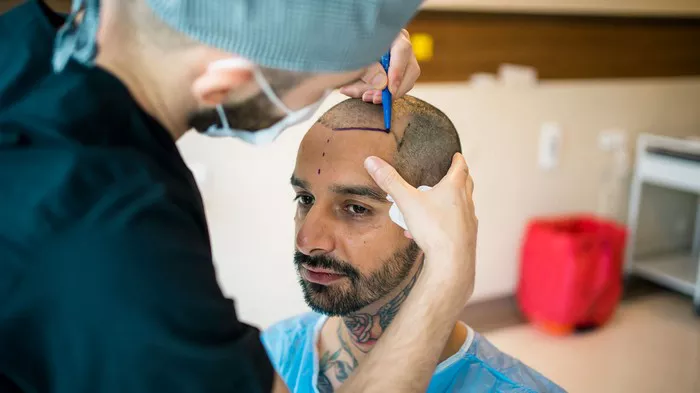Undergoing a hair transplant is a significant decision for individuals seeking to restore hair density and confidence. However, understanding the timeline for recovery and healing is crucial for managing expectations and ensuring optimal results. In this article, we provide a detailed guide on how long it takes for a hair transplant to heal, addressing the various stages of recovery and offering valuable insights for individuals considering this procedure.
Understanding the Healing Process After a Hair Transplant
Immediate Post-Operative Period:
Following a hair transplant procedure, patients can expect some initial discomfort, swelling, and redness in the donor and recipient areas.
It is common for scabbing to form over the transplanted grafts as part of the healing process. Patients are advised not to touch or pick at the scabs to avoid dislodging the grafts.
Patients may experience some mild pain or discomfort, which can typically be managed with prescribed pain medication and cold compresses.
First Week After Surgery:
During the first week post-surgery, patients are instructed to follow specific care instructions provided by their surgeon.
It’s essential to keep the scalp clean and dry, following the recommended washing routine provided by the surgeon.
Swelling and redness may gradually subside within the first few days, although some degree of swelling may persist for up to a week.
Patients are advised to avoid strenuous activities and heavy lifting during this initial recovery period to minimize the risk of complications.
Two to Four Weeks Post-Surgery:
By the second to fourth week post-surgery, most of the scabbing on the scalp will have naturally fallen off, revealing the newly transplanted hair follicles.
While the transplanted hair may initially appear sparse or patchy, this is a normal part of the healing process. New hair growth will gradually emerge from the transplanted follicles in the coming months.
Patients may resume light exercise and physical activities, but should still avoid activities that put excessive strain on the scalp.
One to Three Months Post-Surgery:
During the first one to three months post-surgery, patients may notice some shedding of the transplanted hair. This is a natural phenomenon known as “shock loss,” where the transplanted hairs enter a resting phase before regrowing.
While the initial shedding can be concerning, it’s important to understand that this is temporary, and new hair growth will resume in the coming months.
Patients may begin to see signs of new hair growth as early as three months post-surgery, although full results may take up to a year to become apparent.
Six to Twelve Months Post-Surgery:
By the six-month mark, patients can expect to see significant improvement in hair density and coverage in the transplanted areas.
The majority of the transplanted hairs will have regrown by this point, although some continued growth and thickening may occur over the following months.
Final results from a hair transplant procedure are typically visible by the twelve-month mark, although individual outcomes may vary.
Factors Affecting Healing Time After a Hair Transplant
Patient’s Overall Health: Patients in good overall health tend to experience faster healing and better outcomes after a hair transplant.
Type of Transplant Procedure: The specific technique used for the hair transplant, such as follicular unit transplantation (FUT) or follicular unit extraction (FUE), can influence the healing process and recovery time.
Extent of Hair Loss and Transplantation: The severity of hair loss and the amount of hair transplanted can affect the duration of healing and the final results.
Patient Compliance: Following post-operative care instructions provided by the surgeon is essential for promoting optimal healing and minimizing complications.
Conclusion
In conclusion, the healing process after a hair transplant can vary depending on several factors, including the patient’s overall health, the specific technique used, and the extent of hair loss and transplantation. Understanding the timeline for healing and recovery is essential for individuals considering a hair transplant procedure, as it helps manage expectations and ensures a successful outcome. By following post-operative care instructions and maintaining patience throughout the healing process, patients can achieve natural-looking, long-lasting results and enjoy the benefits of restored hair density and confidence.
How Much Is Artas Hair Transplant

